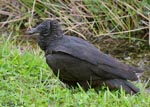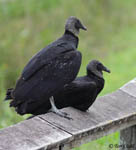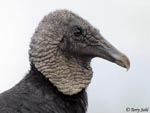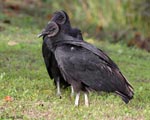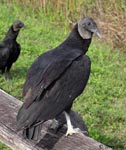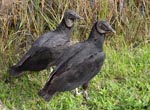| Length: 25 inches | Wingspan: 60 inches | Seasonality: Extremely Rare Visitor |
| ID Keys: Dark overall, with black body, and wrinkly gray head. Primary feathers show as distinct gray wingtips in flight | ||
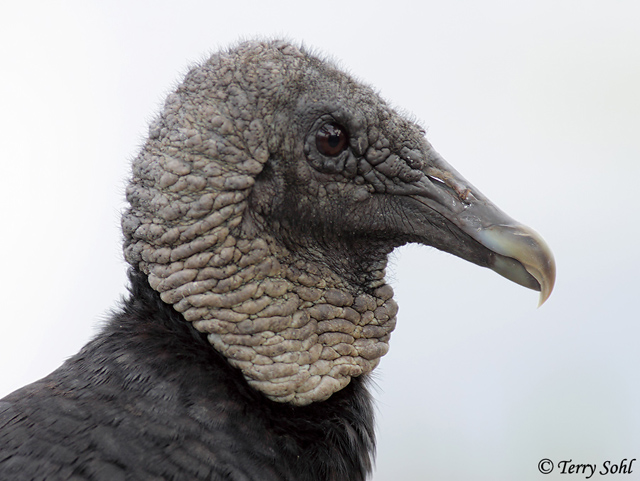 The
Black Vulture is the more common vulture in the southeastern United States,
while it is largely absent in most of the western and northern parts of the
country. They are typically much more gregarious than
Turkey Vultures, often found in large
flocks, and dominating carcasses where the two species overlap, usually due to
sheer numbers and aggressiveness. It is that aggressiveness that has
caused it to be somewhat of a nuisance in areas, as they will sometimes attack
and kill newly born livestock.
The
Black Vulture is the more common vulture in the southeastern United States,
while it is largely absent in most of the western and northern parts of the
country. They are typically much more gregarious than
Turkey Vultures, often found in large
flocks, and dominating carcasses where the two species overlap, usually due to
sheer numbers and aggressiveness. It is that aggressiveness that has
caused it to be somewhat of a nuisance in areas, as they will sometimes attack
and kill newly born livestock.
Habitat: Usually requires a mix of open areas for hunting, and forested areas for roosting and nesting. Unlike Turkey Vultures, they typically avoid open water, and are not found on islands or offshore areas.
Diet: Primarily feeds on carrion, but also will feed on eggs and young birds, and as mentioned previously, will sometimes attack in groups to kill newly born mammals, including livestock.
Behavior: Forages by searching for food from a high gliding flight, with numerous wing flaps compared to some gliding birds.
Nesting: Will nest in a wide variety of locations, but most commonly on the ground in brushy thickets or in large tree cavities. They will also sometimes use buildings or other man-made structures. The female usually lays a pair of eggs, and both parents help to incubate them. When the eggs hatch, both parents help feed the young by regurgitation. The young fledge after about 10 weeks, but typically remain near the parents for several months after fledging.
Interactive eBird Map: Click to access an interactive eBird map of Black Vulture sightings
Song: Black Vultures lack the capability for vocalization, other than grunts or hisses.
Migration: Only somewhat migratory, with some northerly populations partially withdrawing to the south for the winter.
Similar Species: Turkey Vulture
Conservation Status: Numbers and range seem to be increasing. The IUCN lists the Black Vulture as a species of "Least Concern".
Further Information: 1) Audubon Guide - Black Vulture
2) Whatbird.com: Black Vulture
3) USGS Patuxent: Black Vulture
Photo Information: Photo taken on December 10th, 2012 - Everglades National Park in Florida - Terry Sohl
| Click on the map below for a higher-resolution view |
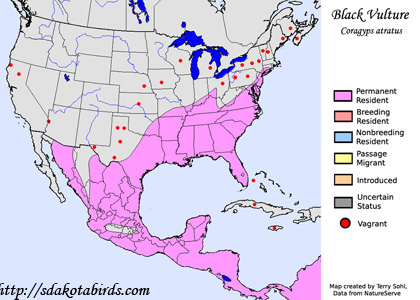 |
| South Dakota Status: Status in South Dakota is "hypothetical", with no confirmed sightings, but considered likely to occur in the state on rare occasions or in the near future. |
Additional Black Vulture Photos
Click for a higher-resolution version of these photos
